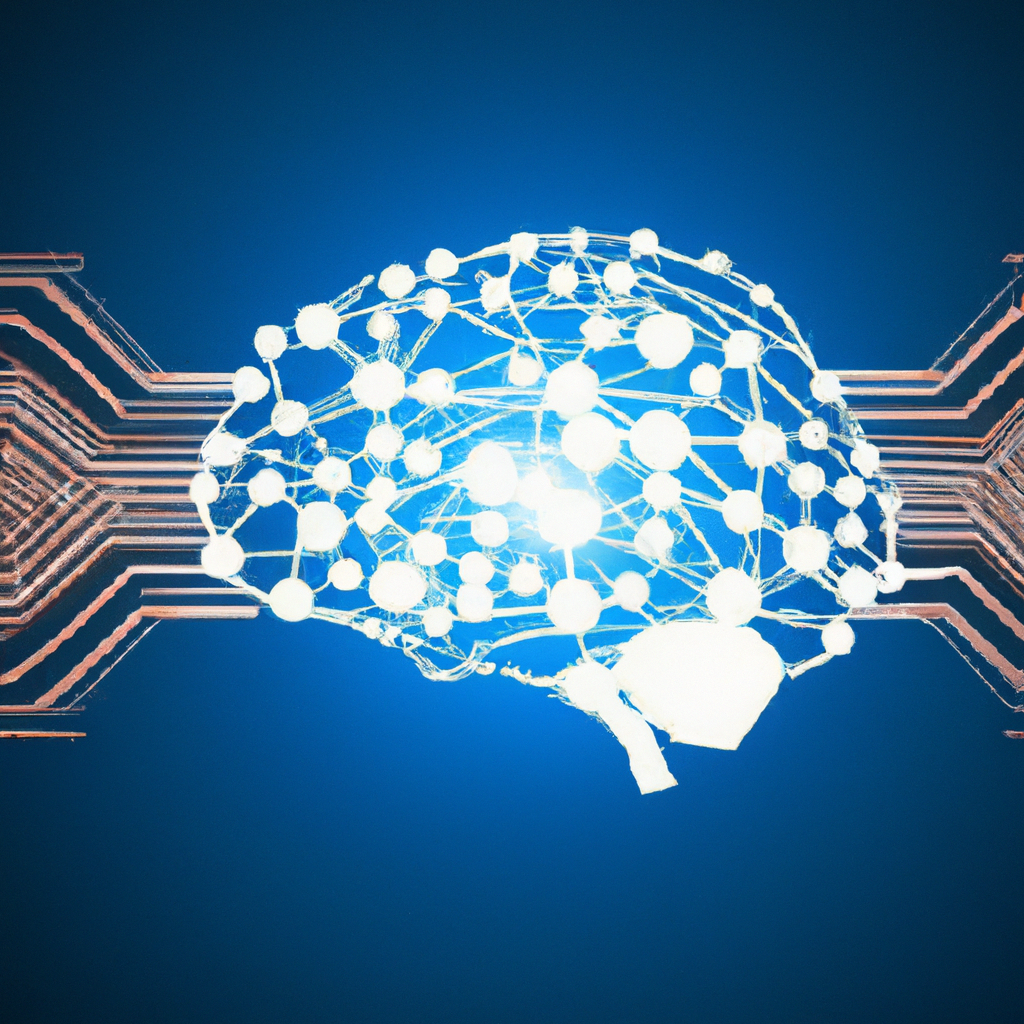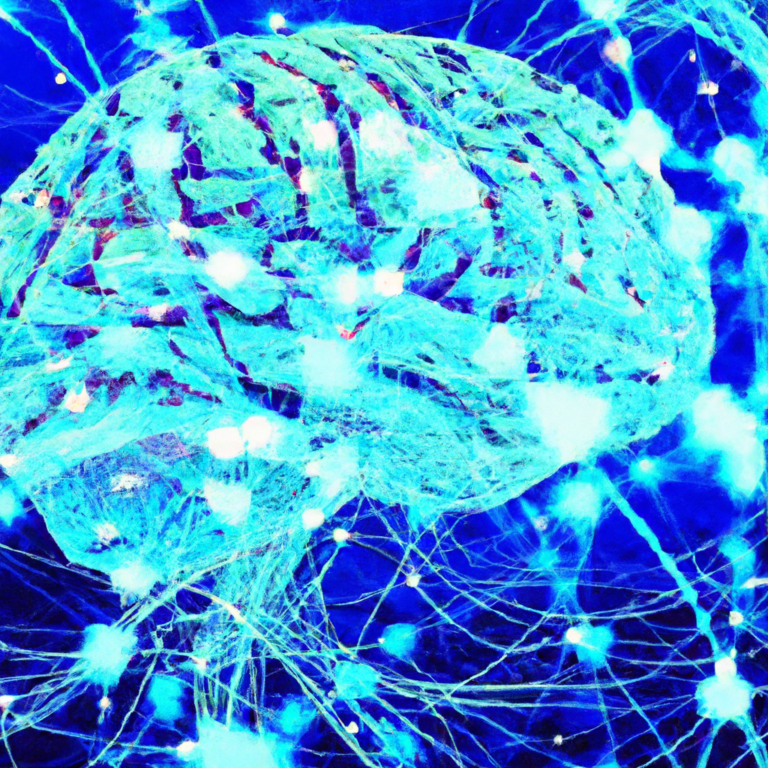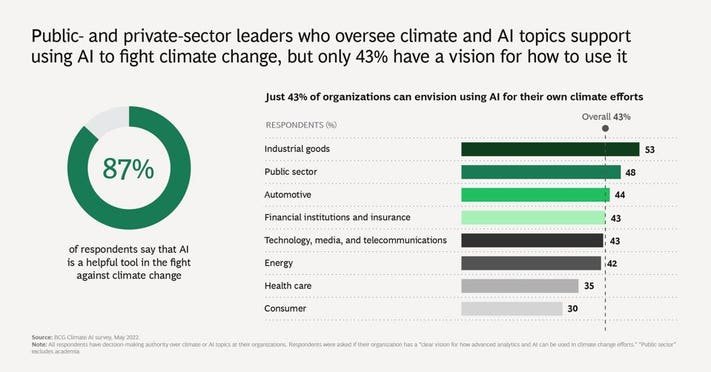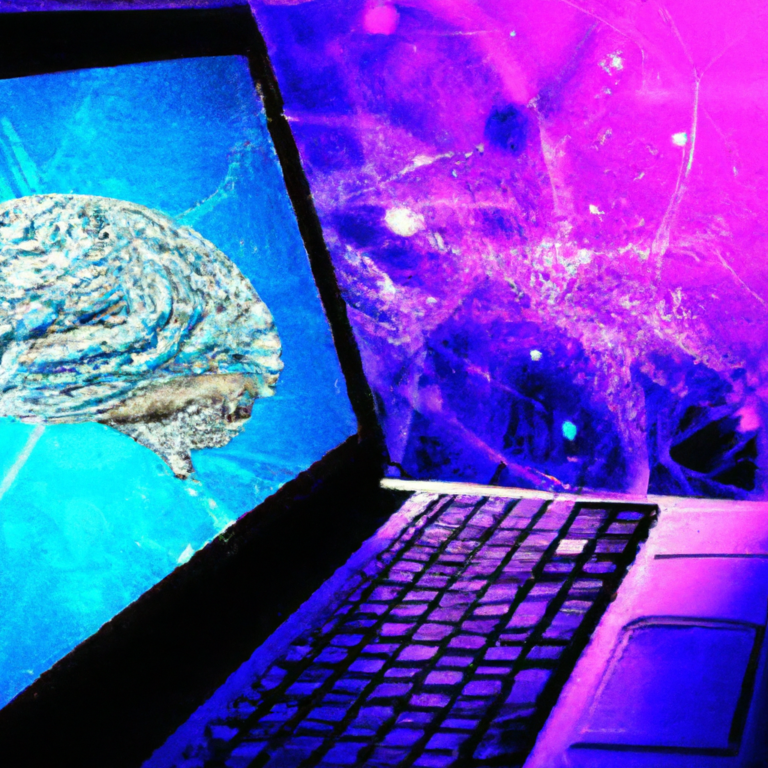AI For Beginners: A Step-by-step Guide To Understanding Artificial Intelligence

Have you ever wondered what exactly artificial intelligence is and how it works? Look no further! In this comprehensive guide, we will take you through the fascinating world of AI, breaking down complex concepts into simple, easy-to-understand steps. Whether you’re a curious individual or a beginner in the field, this article will provide you with a solid foundation in understanding and appreciating the wonders of artificial intelligence. So, let’s embark on this exciting journey together and unlock the mysteries behind AI!

What is Artificial Intelligence?
Definition of Artificial Intelligence
Artificial Intelligence, often abbreviated as AI, refers to the development and deployment of computer systems that can perform tasks that would typically require human intelligence. These systems are designed to analyze complex data, make informed decisions, and perform tasks with a level of efficiency and accuracy that rivals or surpasses human capabilities. AI aims to replicate human cognitive abilities, such as learning, reasoning, problem-solving, and perception, using algorithms and computational models.
History of Artificial Intelligence
The concept of AI can be traced back to ancient times, with various myths and stories featuring artificial beings endowed with human-like qualities. However, the field of AI as we know it today emerged in the 1950s and has since undergone significant advancements. The term “artificial intelligence” was coined by John McCarthy, an American computer scientist, in 1956. The early years of AI research focused on symbolic or rule-based AI, which involved pre-programmed rules for solving specific problems. Over time, AI researchers shifted their attention to machine learning and neural networks, which paved the way for the development of more sophisticated AI technologies.
Types of Artificial Intelligence
Narrow AI
Narrow AI, also known as weak AI, refers to AI systems that are designed to perform specific tasks within a limited domain. These systems excel in one particular area but lack the ability to generalize their knowledge or transfer their skills to other domains. Examples of narrow AI include voice assistants like Siri and Alexa, image recognition systems for facial recognition, and recommendation algorithms used by streaming platforms. Narrow AI systems are widely used today and have become an integral part of our daily lives.
General AI
General AI, also known as strong AI or human-level AI, refers to AI systems that possess the ability to understand, learn, and apply knowledge in a manner similar to human beings. Unlike narrow AI, which focuses on specific tasks, general AI aspires to exhibit human-like intelligence across a wide range of domains and activities. Achieving general AI is a highly complex and challenging task that requires advancements in multiple areas, including natural language processing, computer vision, and decision-making. While general AI remains largely theoretical at this point, ongoing research and developments continue to push the boundaries of AI capabilities.
Superintelligent AI
Superintelligent AI refers to a hypothetical form of AI that surpasses human intelligence in virtually every aspect. This level of AI would possess a far greater understanding, problem-solving ability, and processing power compared to humans, leading to potentially revolutionary advancements in science, technology, and society. The concept of superintelligent AI has sparked scientific and philosophical debates regarding its potential implications, ethics, and control. While superintelligent AI is still largely speculative, it remains a topic of considerable interest and concern among experts in the field.
Machine Learning
What is Machine Learning?
Machine learning is a subset of AI that focuses on the development of algorithms and models that allow computer systems to learn and improve from data without being explicitly programmed. Instead of relying on pre-determined rules or instructions, machine learning systems use statistical techniques to identify patterns in data, make predictions or decisions, and continuously adapt their performance based on new information. Machine learning can be divided into three main categories: supervised learning, unsupervised learning, and reinforcement learning.
Supervised Learning
Supervised learning is a machine learning technique that involves training a model on a labeled dataset. The labeled dataset consists of input data and corresponding output or target labels. During the training phase, the model learns to map inputs to outputs by adjusting its internal parameters based on the patterns observed in the labeled data. Once trained, the model can make predictions or classify new, unseen data based on its learned knowledge. Supervised learning is widely used in various applications, such as image recognition, natural language processing, and recommender systems.
Unsupervised Learning
Unsupervised learning is a machine learning technique that deals with unlabeled data, where the model aims to discover underlying patterns or structures within the data on its own. Unlike supervised learning, where there are target labels, unsupervised learning focuses on finding hidden relationships or clusters in the data without prior knowledge. Common algorithms used in unsupervised learning include clustering algorithms, such as k-means clustering, and dimensionality reduction techniques, such as principal component analysis (PCA). Unsupervised learning has applications in data exploration, anomaly detection, and market segmentation.
Reinforcement Learning
Reinforcement learning is a machine learning technique that involves an agent learning through interactions with an environment to maximize cumulative rewards. In reinforcement learning, the agent takes actions in the environment, and based on the observed outcomes or rewards, it learns to make subsequent decisions that lead to higher rewards or desired outcomes. The agent’s learning process is driven by a trial-and-error approach, where it explores different actions and receives feedback to improve its decision-making abilities. Reinforcement learning has been successfully applied in various domains, including game playing, robotics, and autonomous vehicles.

Deep Learning
What is Deep Learning?
Deep learning is a subfield of machine learning that focuses on the development of artificial neural networks capable of learning and making decisions similarly to the human brain. These neural networks are composed of multiple layers of interconnected nodes, called neurons, that process and transform data. Deep learning has revolutionized several AI applications, particularly in computer vision and natural language processing, by enabling the automatic extraction of complex features and patterns from large-scale datasets. Deep learning models have achieved remarkable performance in tasks such as image classification, speech recognition, and language translation.
Neural Networks
Neural networks are the building blocks of deep learning. They are composed of interconnected layers of artificial neurons, each simulating a biological neuron’s functionality. The layers can be divided into an input layer, one or more hidden layers, and an output layer. During training, the neural network learns to adjust the weights and biases associated with the connections between neurons to minimize the difference between predicted outputs and ground truth labels. This is typically done using gradient-based optimization algorithms, such as backpropagation, which allow the network to iteratively update its parameters based on the error signal propagated from the output layer to the input layer.
Convolutional Neural Networks
Convolutional Neural Networks (CNNs) are a type of neural network specifically designed for processing grid-like data, such as images or audio spectrograms. CNNs leverage a concept called convolution, which involves sliding a small filter over the input data and extracting local patterns or features. This allows CNNs to capture spatial relationships and hierarchical representations in the data. CNNs have achieved groundbreaking results in tasks such as image classification, object detection, and image segmentation, outperforming traditional computer vision techniques.
Recurrent Neural Networks
Recurrent Neural Networks (RNNs) are a type of neural network architecture that has loops or cycles within the network, allowing information to persist over time. This makes RNNs particularly effective in processing sequential or time-dependent data, such as natural language and speech. RNNs have a unique ability to learn from past inputs and utilize that knowledge to make predictions or generate outputs that depend on the context of the previous inputs. This makes RNNs well-suited for tasks like language translation, sentiment analysis, and speech recognition.
Natural Language Processing
Definition of Natural Language Processing
Natural Language Processing (NLP) is a subfield of AI that focuses on enabling computers to understand, interpret, and generate human language. NLP combines techniques from linguistics, computer science, and machine learning to develop algorithms and models that can process, analyze, and derive meaning from textual and spoken data. NLP encompasses a wide range of tasks, including language translation, sentiment analysis, speech recognition, and question answering, among others.
Applications of Natural Language Processing
NLP has numerous practical applications across various industries and domains. In customer service, NLP-powered chatbots can provide automated and personalized responses to customer queries, improving efficiency and customer satisfaction. In healthcare, NLP techniques can be used to extract relevant information from medical records, assist in diagnosing diseases, and automate clinical documentation. NLP also plays a crucial role in sentiment analysis, where it helps businesses gauge public opinion and sentiment towards their products, services, or brands by analyzing social media posts, customer reviews, and other textual data sources.
Computer Vision
What is Computer Vision?
Computer vision is a field of AI that focuses on enabling computers to understand and interpret visual data, such as images and videos. It involves the development of algorithms and models that can extract meaningful information from visual inputs, recognize objects and scenes, and perform various visual tasks. Computer vision has made significant strides in recent years, thanks to advancements in deep learning and neural networks, enabling machines to “see” and interpret visual data with impressive accuracy and speed.
Image Classification
Image classification is a fundamental task in computer vision that involves assigning labels or categories to images based on their content. By training deep learning models on large datasets of labeled images, computers can learn to recognize and classify objects, scenes, or patterns within the images. Image classification has practical applications in various domains, such as autonomous driving, surveillance systems, and medical imaging, where machines can automatically detect and classify objects or anomalies in visual data.
Object Detection
Object detection is a more advanced computer vision task that goes beyond image classification by not only identifying objects but also localizing their positions within an image. Object detection algorithms use bounding boxes to identify the presence of multiple objects in an image and provide their respective class labels. This task is widely used in applications like autonomous vehicles (to identify pedestrians, other vehicles, and traffic signs), video surveillance, and augmented reality.
Image Segmentation
Image segmentation involves dividing an image into multiple regions or segments to extract more precise and detailed information about different objects or regions within the image. Unlike object detection, which focuses on identifying and localizing objects, image segmentation provides pixel-level labeling of the image, allowing for more fine-grained understanding and analysis. Image segmentation has numerous applications, including medical image analysis, autonomous robotics, and content-based image retrieval.
Expert Systems
Definition of Expert Systems
Expert systems are AI systems designed to emulate the knowledge and problem-solving capabilities of human experts in specific domains. They consist of a rule-based or knowledge-based system that uses a knowledge base, inference engine, and user interface to provide expert-level advice and solutions. Expert systems are built by capturing and encoding domain-specific knowledge through a combination of rules, heuristics, and logical representations. They have been successfully applied in various fields, including medicine, engineering, finance, and environmental sciences.
How Expert Systems Work
Expert systems work by leveraging the knowledge base, which contains a vast collection of rules and facts specific to the problem domain. The inference engine processes input from users and matches it against the rules and facts stored in the knowledge base. Based on the input and the predefined rules, the system uses logical reasoning to deduce possible solutions or recommendations. The user interface allows users to interact with the expert system, providing inputs, receiving outputs, and seeking explanations. Expert systems can be designed to operate in a standalone manner or as a component within a larger AI system.
Applications of Expert Systems
Expert systems have found application in numerous domains where human expertise and problem-solving abilities are crucial. In medicine, expert systems assist doctors in diagnosing diseases, interpreting medical images, and recommending treatment plans based on patient-specific data. In finance, expert systems can provide investment advice, portfolio management, and risk assessment. They have also been utilized in areas like quality control, logistics, and environmental monitoring to enable fast and accurate decision-making based on domain-specific knowledge.
Ethics and AI
Ethical Considerations in AI
As AI becomes increasingly pervasive in various aspects of society, ethical considerations play a vital role in ensuring its responsible and beneficial use. One central ethical concern is the potential impact of AI on employment, as many fear that automation powered by AI systems might lead to job displacement and inequality. Additionally, questions regarding AI’s role in decision-making, accountability, and transparency have raised concerns over fairness and biases in AI algorithms. Ethical frameworks and guidelines are being established to address these concerns and to ensure the development and deployment of AI systems align with ethical principles.
Bias in AI Systems
One critical challenge in AI systems is the potential for biases to be present in the data used for training and the algorithms themselves. Biases can occur when training data disproportionately represents certain demographics or contains inherent biases reflected in human decisions or historical data. Biased AI systems can reinforce and perpetuate societal biases, leading to unfair and discriminatory outcomes. Mitigating bias in AI requires careful data collection, algorithm design, and ongoing monitoring and evaluation to ensure fairness, transparency, and inclusiveness.
Privacy and Security Concerns
The widespread adoption of AI introduces new privacy and security challenges. AI systems often require access to vast amounts of personal data, raising concerns about data privacy and potential misuse. Maintaining secure infrastructures and robust data protection measures is crucial to safeguarding individuals’ privacy and preventing unauthorized access or data breaches. Additionally, AI systems must adhere to ethical principles, such as informed consent and data anonymization, to ensure that the rights and privacy of individuals are respected and protected throughout the AI lifecycle.
AI in Everyday Life
AI in Healthcare
AI has the potential to revolutionize healthcare by enabling more accurate and efficient diagnostics, personalized treatment plans, and improved patient care. AI-powered medical imaging systems can assist radiologists in detecting abnormalities and diagnosing diseases from medical images, leading to faster and more accurate diagnoses. AI algorithms can also analyze patient data, medical records, and genetic information to tailor treatments, predict disease progression, and improve patient outcomes. Additionally, AI chatbots and virtual assistants can provide 24/7 medical advice and support, enhancing access to healthcare services.
AI in Transportation
AI is driving significant advancements in the transportation sector, particularly in the development of self-driving vehicles. Autonomous vehicles rely on AI technologies, such as computer vision, machine learning, and robotics, to perceive their environment, make decisions, and navigate safely. Self-driving cars have the potential to reduce road accidents, improve traffic flow, and enhance transportation accessibility for individuals with mobility challenges. AI is also used in optimizing route planning, ride-sharing services, and smart traffic management systems, leading to more efficient and sustainable transportation networks.
AI in Finance
AI is transforming the finance industry by automating complex tasks, enhancing risk management, and improving customer experiences. AI-powered chatbots and virtual assistants can handle customer inquiries, provide personalized financial advice, and streamline the customer service process. AI algorithms can analyze vast amounts of financial data and market trends to make predictions, optimize investment strategies, and detect fraudulent activities. Additionally, AI is employed in credit scoring, fraud detection, and algorithmic trading, making financial processes more efficient and reducing human error.
Future of Artificial Intelligence
Current Trends and Developments
The future of artificial intelligence holds numerous exciting possibilities and ongoing trends. One prominent trend is the increasing integration of AI with other emerging technologies, such as the Internet of Things (IoT), robotic automation, and quantum computing. This convergence enables AI systems to interact with the physical world, optimize processes, and solve more complex problems. Additionally, there is a growing focus on explainable AI, aiming to provide transparency and interpretability in AI systems’ decision-making processes, fostering trust and accountability.
Challenges and Opportunities
The advancement and adoption of AI bring forth both challenges and opportunities. Ethical considerations, such as bias, privacy, job displacement, and societal impact, must be carefully addressed to ensure the responsible and beneficial use of AI. The rapid pace of technological advancements also poses challenges in keeping up with evolving AI capabilities and ensuring that regulations and policies adapt accordingly. Despite these challenges, AI presents immense opportunities in various fields, including healthcare, finance, transportation, and scientific research, by augmenting human capabilities, driving innovation, and solving complex problems.
Impact of AI on Society
The impact of AI on society is multifaceted and far-reaching. On one hand, AI has the potential to enhance productivity, improve quality of life, and address societal challenges by augmenting human capabilities and automating mundane or dangerous tasks. AI-driven advancements in fields like healthcare, transportation, and finance have the potential to revolutionize industries and improve overall societal well-being. On the other hand, there are concerns regarding job displacement, biases, and the concentration of power that AI may bring. Ensuring equitable access to AI technologies and considering the ethical and social implications of AI is crucial for maximizing its positive impact on society.
In conclusion, artificial intelligence plays a significant role in shaping our present and future. From narrow AI applications that serve specific functions to the aspirational goal of achieving general or superintelligent AI, the field continues to evolve and impact various aspects of our lives. Machine learning and deep learning techniques enable AI systems to learn from data and make informed decisions. Natural language processing and computer vision empower AI to understand and interpret human language and visual data. Expert systems emulate human expertise in specific domains, and ethical considerations guide the responsible development and deployment of AI. As AI becomes more prevalent in everyday life, it transforms industries such as healthcare, transportation, and finance, offering numerous opportunities for improvement and innovation. Looking ahead, the future of AI holds immense potential, along with challenges that require careful attention and ethical considerations to ensure its beneficial integration into society.
Want to write articles like us? Get your copy of AI WiseMind here!






